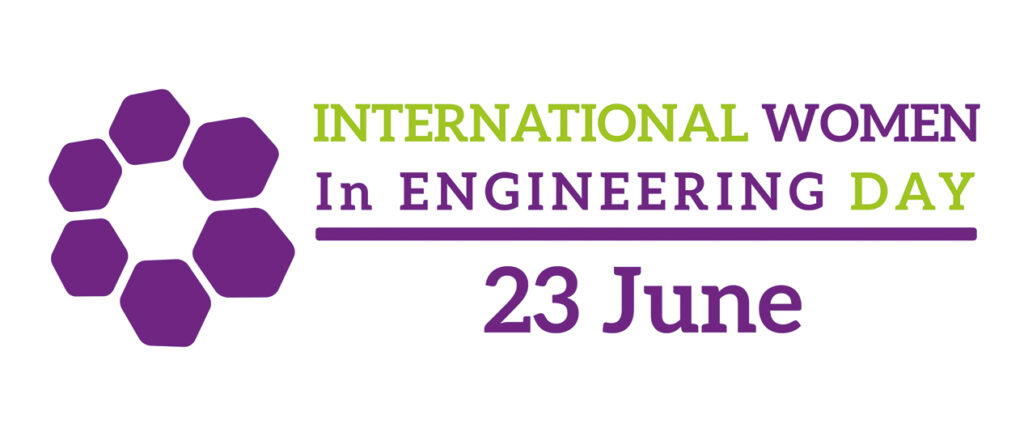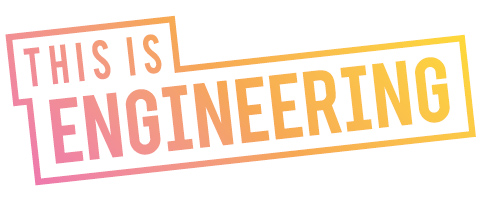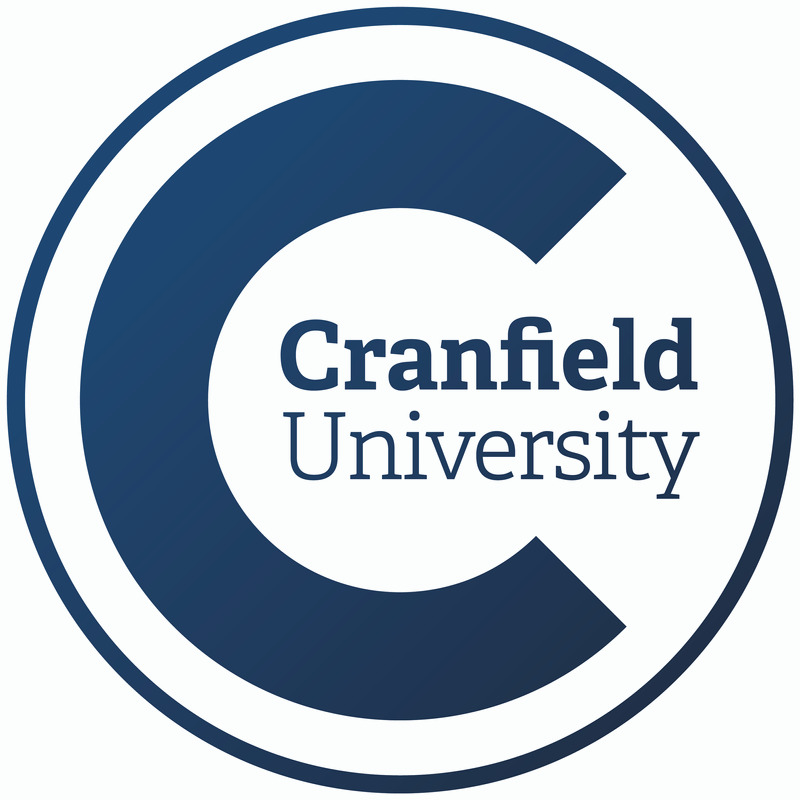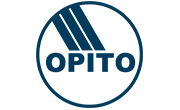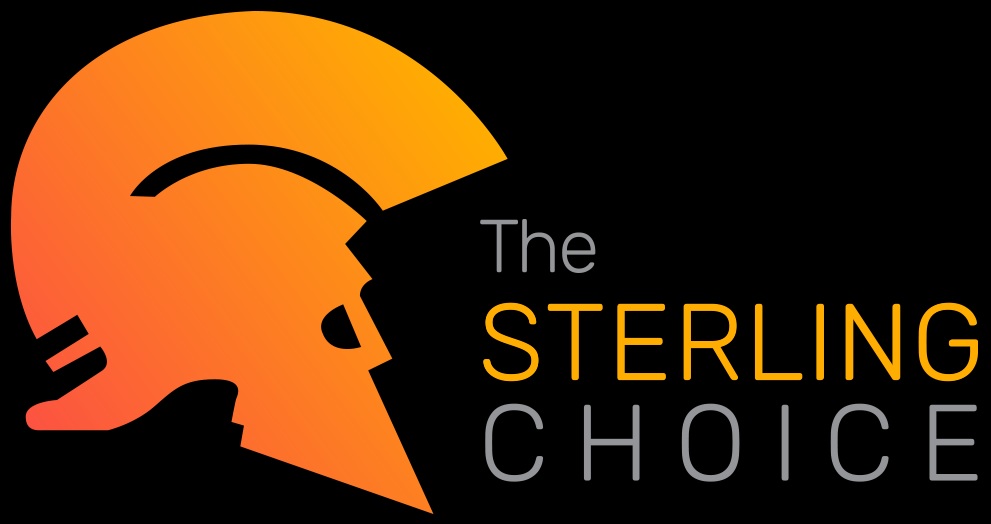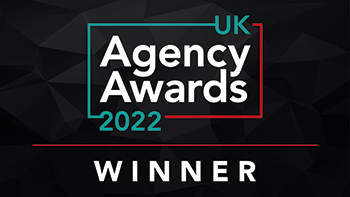Stories 2021 - Engineering Heroes
Film collection key messages to highlight:
- The Royal Academy of Engineering has partnered with Becoming X and Amazon to celebrate pioneers in engineering and technology, with a new This is Engineering series to inspire the next generation to become engineers of the future.
- The first three films of the series will be released as an ‘Engineering Heroes’ collection to coincide with INWED on 23 June, to raise the profile of women engineers and inspire more women to consider a career in engineering.
- Engineering Heroes aims to challenge the traditional stereotypes associated with engineers, and show engineering as a fulfilling and exciting career for future generations.
- The first three films are raw and powerful, with each protagonist sharing an immensely personal and inspiring story. They show that there is no single path into engineering, but drive and determination led each of them build a better world through a career based on solving problems.
- These uplifting and empowering films show that engineers all have different stories. Their resilience and tenacity have led them to careers where they make a difference as engineering heroes.
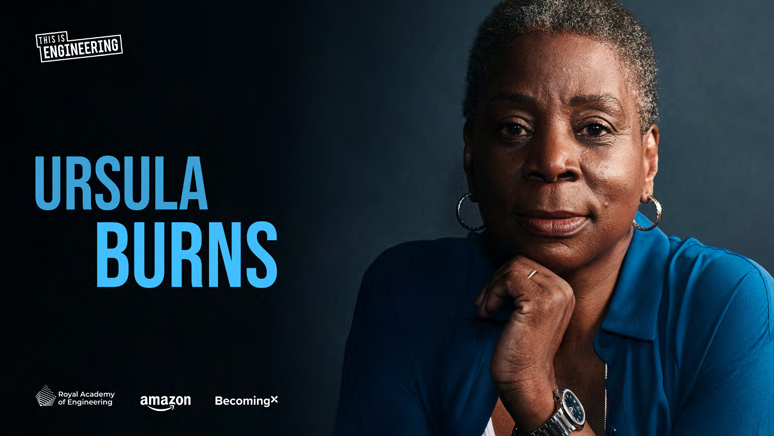
Ursula Burns
Became first African American woman CEO of a Fortune 500 company
Growing up in poverty and a single-parent household in Manhattan’s lower east side, Ursula Burns knew the value of hard work. After joining Xerox as an engineering intern in 1980, she worked her way up to becoming CEO in 2009. President Barack Obama asked her to lead the White House National STEM program, to improve student participation and performance. She also founded Change the Equation, a not-for-profit programme aiming to boost STEM education for young people, and remains an active campaigner for diversity in boardrooms.
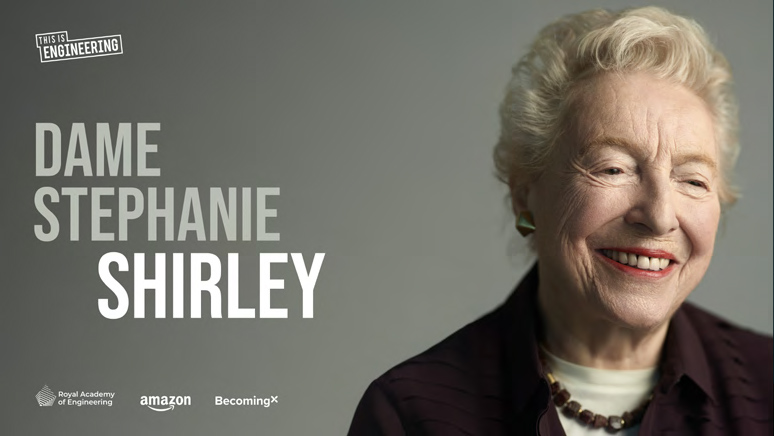
Dame Stephanie Shirley CH
Became a pioneering technology entrepreneur, philanthropist and icon for gender equality
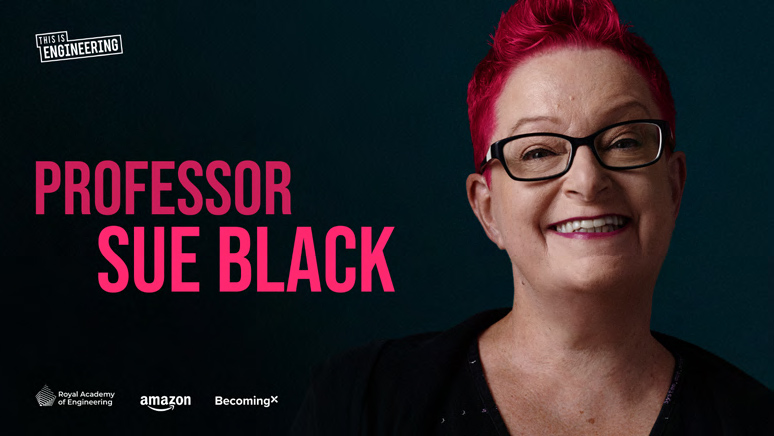
Professor Sue Black
Became a Professor of computer science and technology after leaving school at 16 and fleeing and unsafe home
Became a Professor of computer science and technology after leaving school at 16 and fleeing and unsafe home After dropping out of school due to family challenges, fleeing a violent home life and becoming a single mother of three, Sue defied the odds. Sue rose to the highest ranks in academia and founded multiple industry-leading initiatives to help women get into technology roles. She raised £4.1 million to save the Bletchley Park site, where 75% of the 10,000 staff had been women. She is now a Professor of Computer Science at Durham University, where the number of female engineering students has doubled. Sue was awarded an OBE In 2016 for her services to technology.

Heroes stories
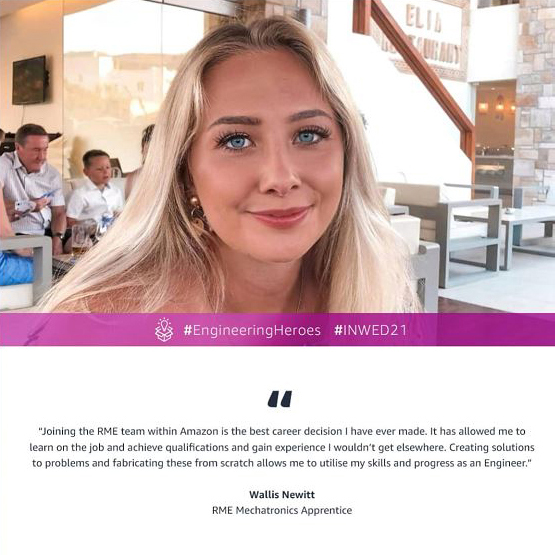
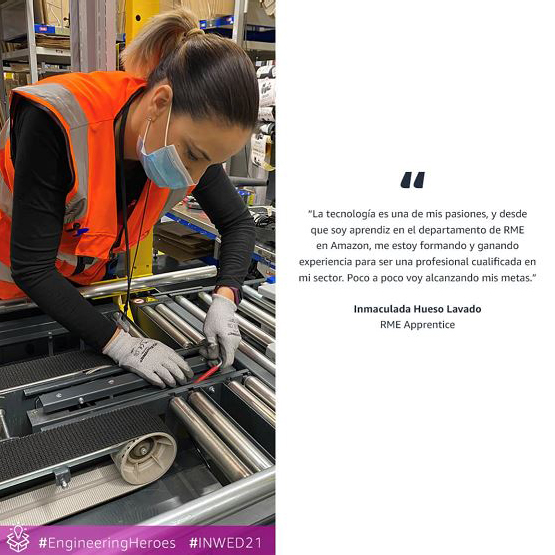
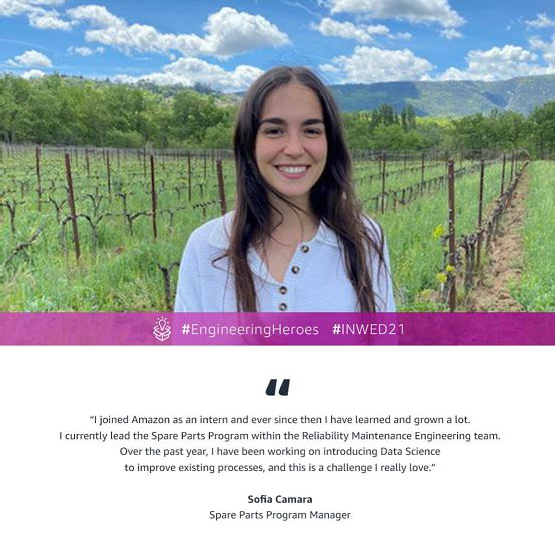
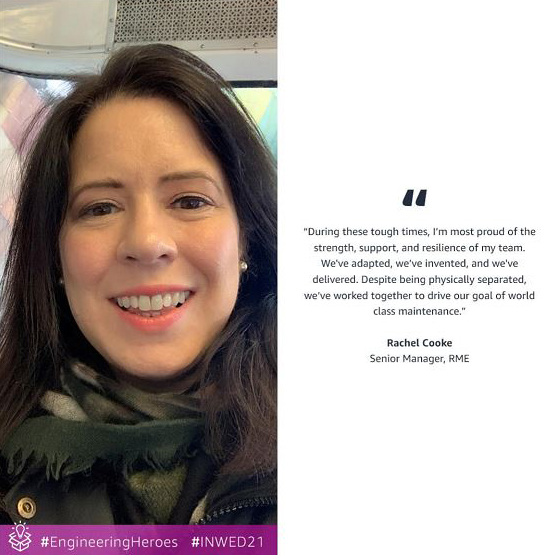
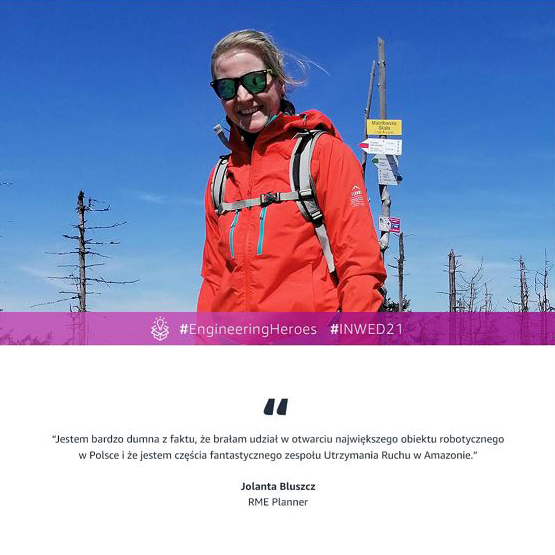
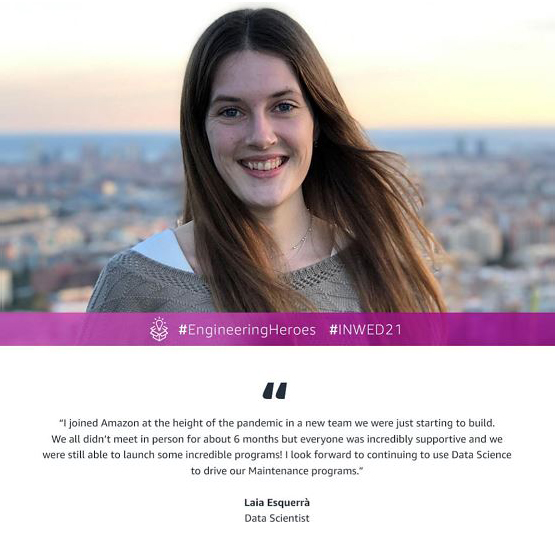
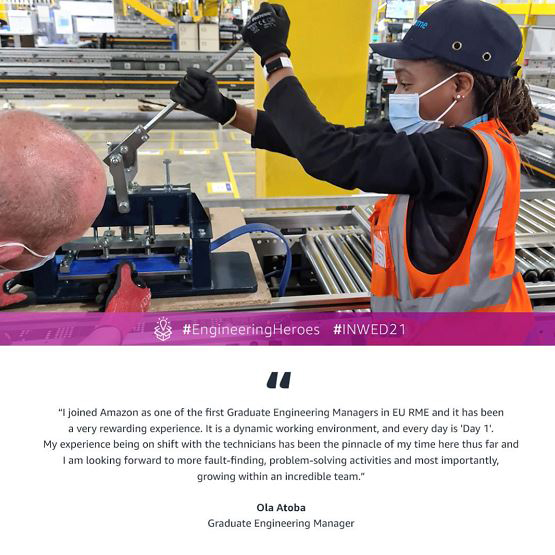

Heroes story
As part of its 2018 intake, adi welcomed its first female trade apprentice, Abbie Beaver, who now works as a mechanical engineer.
Beginning her career in fabrication and welding, Abbie was one of the youngest people in the workplace and has continued to have a positive impact on both the business and aspiring female engineers.
So much so that she was previously recognised as one of the Women’s Engineering Society’s top 50 women engineers in the UK. Now, Abbie hopes to inspire other young girls and women to pursue a career in the field.
Read More
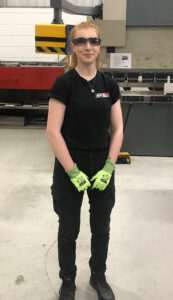
She said, “We grow up constrained to the idea that engineering is a man’s job. But that couldn’t be further from the truth. There are so many opportunities to grow both personally and professionally within the field, which women are just as capable of pursuing.
“I think it all comes down to debunking any myths and false perceptions early on in our education, which is why I am a strong advocate of the company’s apprenticeship opportunities. They enabled me to see to the reality of life as an engineer, which was far from the oily rags and labour-intensive images I had in my head. Thanks to this opportunity, I am now a qualified mechanical engineer who loves what I do.
“I would highly recommend the job, and in particular the apprenticeship scheme, to any girl out there.”
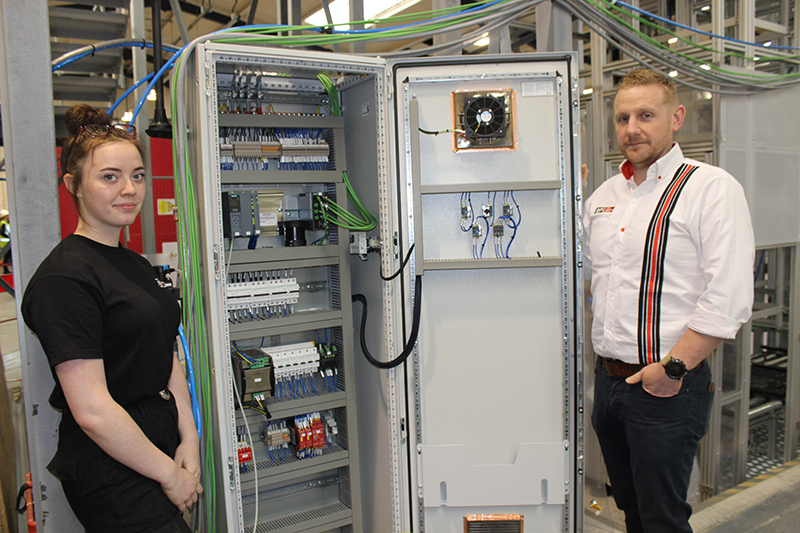 Abbie isn’t the only success story to come from the firm’s commitment to the industry’s inclusive future either. In fact, Caitlyn Kett-Davies, another apprentice taken on through adi’s educational scheme, is playing an instrumental role in the automotive wing of the business, working with household names across the country with the approval process of their equipment.
Abbie isn’t the only success story to come from the firm’s commitment to the industry’s inclusive future either. In fact, Caitlyn Kett-Davies, another apprentice taken on through adi’s educational scheme, is playing an instrumental role in the automotive wing of the business, working with household names across the country with the approval process of their equipment.
Similarly, Melissa Britchford, works for the Group as a test and inspection engineer. With numerous years of experience as a female in the field, Melissa has some advice to offer prospective talent.
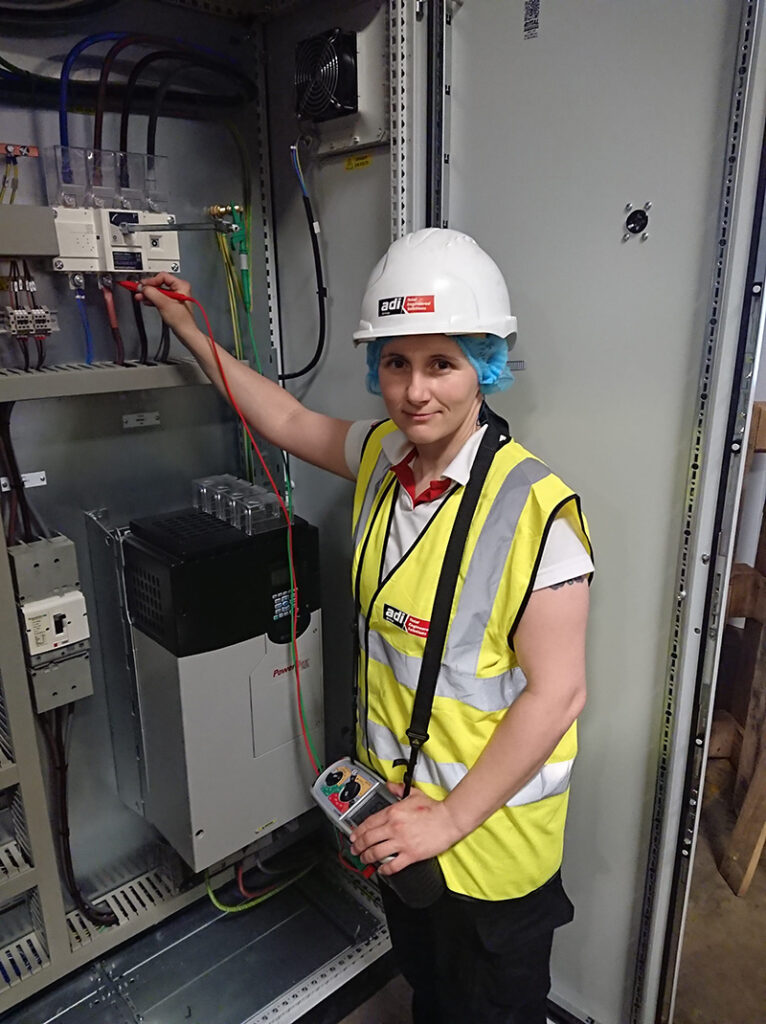 “A career in engineering can be incredibly rewarding, but you do need to have thick skin. The job is still seen as something only men do by society, so site visits can sometimes evoke unpleasant comments from people who don’t think you belong or know what you are doing.
“A career in engineering can be incredibly rewarding, but you do need to have thick skin. The job is still seen as something only men do by society, so site visits can sometimes evoke unpleasant comments from people who don’t think you belong or know what you are doing.
“However, with adi’s full support when it comes to training and development, you know you can always look forward to that feeling of satisfaction once you prove these people wrong by getting the job done – and to a high standard at that.
“There are also many aspects of the role where being female works in our favour. For example, I have worked on projects for vulnerable women, who appreciate having a female they can call on, as well as others where my smaller body frame has enabled me to get into spaces an average sized man couldn’t.
“So, like most roles, there are pros and cons, but don’t let the false belief that engineering is a man’s job stop you from pursuing a career in the field.”

Heroes story
Since the start of the pandemic, Boeing teams across the UK have operated alongside the Armed Forces in the key role they have played to support the UK government’s COVID-19 response. Last year, the RAF Odiham Chinook Support Centre, a joint RAF and Boeing team, produced 3D-printed clips that made personal protective equipment (PPE) more comfortable for NHS workers. The Portal, Boeing’s state-of-the-art analysis, experimentation and engagement facility in Hampshire, was offered for mathematical modelling and data analysis. Our employees have volunteered in their local communities, donated supplies and produced 3D-printed items for the NHS. Furthermore, we’ve supported reservist colleagues called up to serve in the Armed Forces. In 2020, some of our team were deployed to get medical equipment, staff and patients to where they are needed most.
Anu, software engineer
A life-changing decision to leave India brought Anu to the UK to pursue her engineering dreams. In 2017, Anu joined Boeing Defence UK, originally as an Information Technology Project Manager, and then gradually honing her expertise in the careful management of digital information. She is now a Test Manager on the Synthetic Training Environment programme for the MOD. In a constant pursuit of self-improvement, Anu maintains several professional affiliations, including the Boeing Women Inspiring Leadership group and the Women in Aviation and Aerospace Charter, where she inspires the next generation of STEM leaders.
“I’ve always felt it important to maintain a learning mindset and stay up to date with the latest engineering breakthroughs and innovative thinking. It’s true that ‘knowledge is power’ but only when you use it to help and empower others.
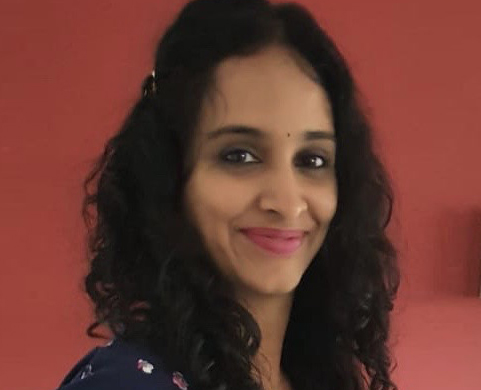
Beatriz, graduate engineer
Ever curious as a young girl, Beatriz was always asking the big questions about the world, such as ‘why is the sky blue?’. She went on to study physics, recognising that the answers to many of her questions could be found in the study of natural science. She later specialised in applied physics and completed a master’s in Aerospace Materials Engineering, continuing to explore the same questions; how do things work and how can I improve them? Now, as a Boeing graduate engineer, Beatriz is a member of the UK’s E-7 programme, putting theory into practice and exploring how different engineering components can work together effectively to optimise the performance of the aircraft.
“I’m part of a diverse team at Boeing, working with people from across different technical and specialist backgrounds. This rich mix of voices and perspectives means that we’re always ready to review our engineering practices, check why we are doing it and how it can be improved.”
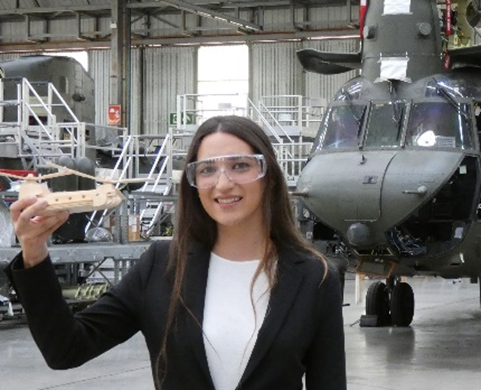
Amy, E-7 Programme Coordinator
It’s been a whirlwind start for Amy, who first joined Boeing in 2016 as an intern through the early careers scheme and returned again in 2018 an IT technical graduate. She successfully transitioned to a permanent role as Programme Coordinator for the UK Wedgetail AEW MK1 (E-7) program in 2020. Amy now oversees and supports multiple technical projects. Alongside her full-time role, she is undertaking a part-time Masters in Management and Information Systems in Manufacturing, sponsored by Boeing.
“The best part of the job for me is learning from the vast talent and experience of others, either internally at Boeing, or from our customers. No two days are ever the same – some days I can face real challenges and on others there’s overwhelming progress being made.”
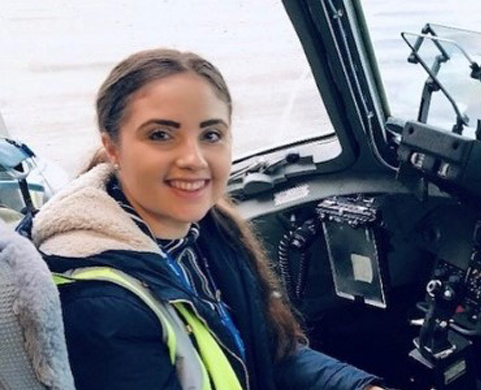

Heroes story
Scientists at Cranfield University, in collaboration with University of Liverpool and Lancaster University, invited local residents across Bedfordshire to get involved in a citizen science research project by growing lettuce in their gardens. Residents who got involved were sent lettuce-growing kits containing seeds, a logbook, a trowel, plant labels, markers, and sample collection kits.
Read More
Scientists are exploring whether growing more of our own food, particularly in urban areas, could lead to healthier lifestyles, improved wellbeing, and better access to healthy and nutritious food, especially during crises such as the current pandemic. Local residents who participate were asked to grow lettuces for eight weeks, collecting samples and completing a weekly questionnaire
“Lockdown Lettuce Beds” is part of the Rurban Revolution research project which brings together expertise in ecosystems, psychology, plant sciences, and supply chains from Lancaster University, Cranfield University and University of Liverpool. Over the two years, we will be building an interdisciplinary evidence base on how urban green spaces and growing potentially influences:
- Healthy and sustainable diets by improving availability, access and consumption of fruit and vegetables.
- Food production in terms of quantity, quality and safety and the resilience of the UK food system.
- Ecosystem service delivery, both inside and outside cities.
Dr Sofia Kourmpetli, Lecturer in Plant Sciences at Cranfield University, said: “There is great potential to increase the amount of home-grown food particularly in urban areas. Engaging in food-growing activities has proven to have important health benefits. It could also increase a household’s sense of resilience and wellbeing during hard times, such as the COVID-19 lockdown. Lockdown Lettuce Beds will help us get a better understanding of these benefits and how we can encourage more people to ‘grow their own’.’’

Heroes story
The Spectris group of companies (HBK, Malvern Panalytical, Omega, Servomex, Red Lion, NDC, VI Grade, Concept Life Sciences and Particle Measuring Systems) all have engineering, science, and technology at their hearts. During the pandemic our employees have shown courage, caring and support for each other, our customers, and the wider community. Here are just a few examples of how our employees have been engineering heroes…
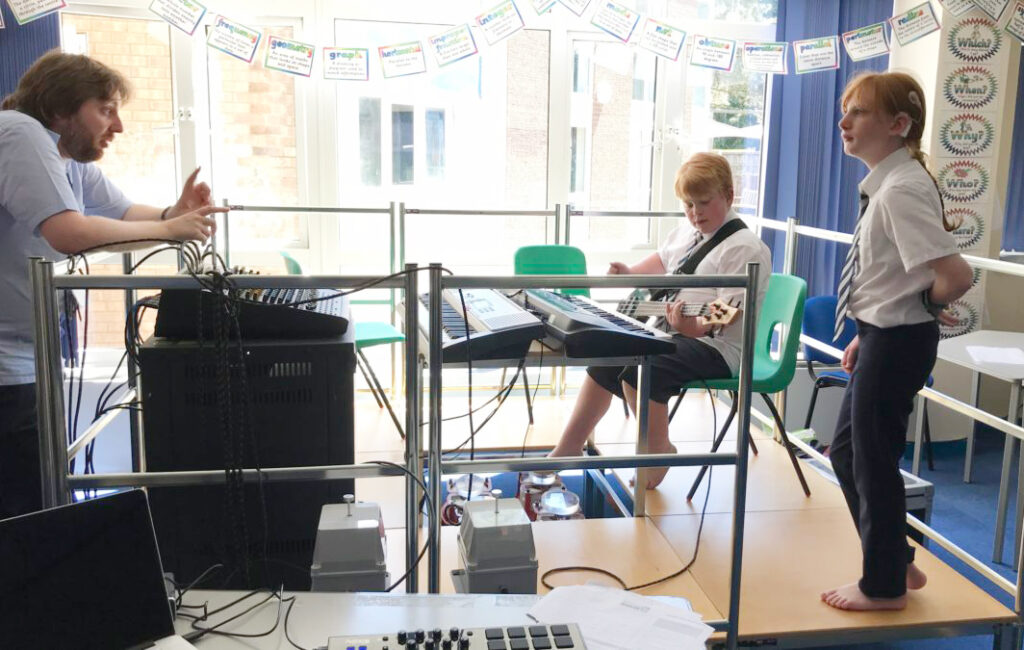
Read More
Supplying PPE
When Covid first hit back in March 2020, some of our employees in Malvern Panalytical in the UK and HBK in Portugal started to use their 3D printers to manufacture face shields for key workers. Our enterprising engineers even used their own printers at home so that they could maximise the output. The face shields were distributed to healthcare workers in hospitals, care homes and local surgeries. Malvern Panalytical were later recognised by the UK Chamber of Commerce with a Business Hero 2020 award.
Oxygen sensors for Ventilators
Our Servomex business supported GE Healthcare (‘GEHC’) to scale up the manufacture of life sustaining ventilators to help treat patients with COVID-19, through scaling up production of the Paracube Oxygen sensor at their facility in the UK. The technical innovations that Servomex and GEHC have worked on together as well as the ramp up of the existing manufacturing processes means that patients around the world had significantly more ventilators available.
Effective Drug Delivery Systems
Winter 2020/21 marked the first entry onto the market of ribonucleic acid (RNA) based vaccines. Delivery to the recipient’s immune system of messenger RNA (mRNA) coding for the SARS-CoV-2 ‘spike protein’ causes production of this protein, stimulating an immune response without risk of infection. The mRNA is generally delivered using lipid-based nanoparticles, with their physicochemical nature being key to the high efficacy of these vaccines.
The past year has seen the Malvern Panalytical products, Zetasizer Advance and NanoSight NS300, used extensively by vaccine developers and their supply chains, allowing them to optimize the delivery of mRNA and hence the efficacy of the vaccine. Through concentration calculation, these technologies also monitor the yield/dosage at different steps of the nanoparticle development process. The importance of timely and predictable manufacture of vaccines at a time like this cannot be overstated, and this data has helped developers design, scale up and control their manufacturing processes with the required rapidity.
Supporting Women in Engineering
Omega was founded by Betty Ruth Hollander, back in 1962. A time when women in STEM, let alone women owned businesses were incredibly rare. Omega maintains a strong legacy in supporting women in STEM and for their 2020 global day of giving campaign, they supported the Girls Science Technology Engineering Art and Maths (‘S.T.E.A.M.’) Institute. The Institute’s goal is to provide a framework and platform that informs, inspires, and empowers young girls to explore entrepreneurial opportunities that can change the world through S.T.E.A.M.
Helping Deaf People Feel the Music
The Musical Vibrations project (www.musicalvibrations.com), aims to demonstrate the potential of using vibrotactile feedback – in other words, sound presented as vibration that is felt via the skin. The basic concept is that any musical performance can effectively be turned into a computer-controlled amplified performance where the sound from each instrument is taken to a mixing desk and sent back as a vibration signal to be presented to the body of the musician. In a study by the University of Liverpool Acoustics Research Unit, children from the Royal School for the Deaf Derby were invited to see how the vibrotactile approach would work in an educational setting. Vibrotactile equipment was set up in the classroom to see if it improved the children’s ability to understand music. The children were asked to play different electrical instruments while simultaneously placing their hands or bare feet on small LDS shakers from HBK and feel the sound. So instead of the music being delivered through vibrations in the ear, vibrations through the skin allow the children to perceive music. Along with a greater access to sound the research also found that additional educational value was evident in behavioural changes with increased teamwork and social interaction between pupils.

Heroes story
2020 demonstrated that there is a hero in all of us. Covid-19 caused us to care for and protect our communities to a greater extent than ever before. Dornan’s UCLE Marshgate project team embodied the ‘engineering and community hero’, alongside project partners Mace by helping vulnerable children, who needed ongoing support throughout the pandemic.
Read More
In November 2020, Dornan and Mace worked with AAA (Ambition, Aspire, Achieve). AAA focuses on and supports children and young people most in need, including those with disabilities or additional needs. Dornan provided help with the project management, QA & product procurement in delivering a garden, playground area, a new greenhouse, and chicken shed.
Dornan continues to recognise the importance of early engagement opportunities by working with apprentices and securing a more diverse team and, in turn, is delighted to use their engineering skills to benefit a community, which is local to some of these female team members.
Heroes story
Given the nature of our work, we’ve previously spent nearly all our work time in our offices. This meant that when COVID appeared, none of the normal HR and finance apps that employees use day to day could be accessed at home, even on our corporate devices. Enter our Engineering Heroes, in the form of a freshly created set of development teams, led by Fran as Product Owner – with a task to break new ground and provide the new apps our people needed, in a secure and accessible way, ASAP!
Read More
During this awesome effort, Fran and the teams involved needed to move at pace to change policy and help understand and drive security principles, designing and implementing solutions while adapting to changing business priorities. But within weeks the effort had provided apps that enabled key functions such as time recording, expenses and a phonebook for thousands of our people, wherever they were working. The diversity across the teams helps them to come up with innovative solutions to these new problems. Since then, they’ve been continuing to deliver great products, and are helping the organisation go through a cultural shift, as well as providing the immediate tactical response.

Heroes story
Flt Lt Elizabeth Clark, Royal Air Force Engineering Officer
As serving member of the RAF for the past 20 years, Clark currently works as an Engineering Officer (Communications and Electronics). Her focus last year throughout the COVID-19 Pandemic was to enhance her engineering skillset meeting the requirements for a MSc degree in Safety Critical Systems Engineering with distinction.
Her research project was based on a thorough review and evaluation of safety culture and risk management theory and methodology considering the societal and engineering safety implications of home working and the Pandemic.
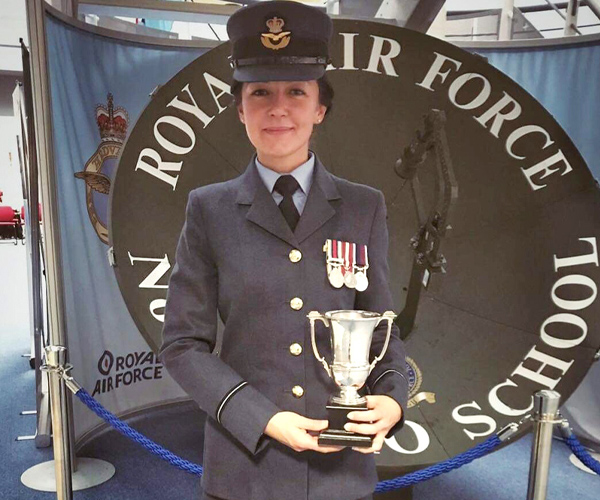
Read More
The content of the project was pertinent for the present moment during a time of National crisis. It offers a handrail to identify risk, issues and safety vulnerabilities associated with operating in a changeable, uncertain and isolating work environment. The project also offers a holistic approach towards the identification, measurement and control of risk factors that may degrade operational safeguards and engineering safety culture. It focuses on working remotely within a displaced, uncertain and changeable environment that the Pandemic caused; the research found that a plethora of personal, societal and professional pressures has been created that degrades safety engineering safeguards.
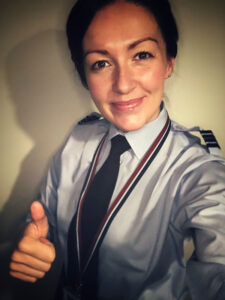 The project examined the indirect effects of COVID-19 and the effect that it has had on individuals working in a remote working environment. As a response to the pressures (both organisational and personal) a bespoke Risk Assessment Tool (RA) for the RAF was created to identify the hazards and risk factors associated with remote working that may create safety vulnerabilities for staff and the organisation. The result of the RA would assist towards determining and prioritising organisational and environmental mitigations to eliminate the hazards or control the risks to safety culture. Alongside the tool, Clark developed a Desk-Top Booklet that aims to raise awareness of the risks associated with remote working and to provide high-level guidance as to how the issues can be addressed. The engineering artefacts that have been created offer excellent guidance for those working remotely, or for displaced managers responsible for personnel operating away from their place of work.
The project examined the indirect effects of COVID-19 and the effect that it has had on individuals working in a remote working environment. As a response to the pressures (both organisational and personal) a bespoke Risk Assessment Tool (RA) for the RAF was created to identify the hazards and risk factors associated with remote working that may create safety vulnerabilities for staff and the organisation. The result of the RA would assist towards determining and prioritising organisational and environmental mitigations to eliminate the hazards or control the risks to safety culture. Alongside the tool, Clark developed a Desk-Top Booklet that aims to raise awareness of the risks associated with remote working and to provide high-level guidance as to how the issues can be addressed. The engineering artefacts that have been created offer excellent guidance for those working remotely, or for displaced managers responsible for personnel operating away from their place of work.
The research and engineering artefacts support the lives and livelihoods of remote and displaced workers during the Pandemic. As many organisations, including the RAF move forwards towards a ‘blended’ approach to working remotely and in the office environment, the research formalises a way of working to ensure the safety and safeguards of personnel, and the RAF’s operational output.
During 2020, Clark was determined to complete her studies despite her personal circumstances, where she was fighting a debilitating bowel disease. During the period of study, she spent months collectively in hospital and had three major surgeries including the removal and reconstruction of vital organs. She recognised a problem and dared to continue in her research endeavours exhaustively until she could provide a solution. She has since made a full recovery and is thoroughly enjoying her role at Air Command, High Wycombe as a specialist Safety Engineer within the Battlespace Management Front Line Command where she employs the academic skills she attained through her studies.
Heroes story
Squadron Leader Wilde, Royal Air Force Engineering Officer
WHAT inspires someone to study Science, Technology, Engineering and Maths (STEM) at school and university and then join the Royal Air Force as an Engineering Officer?
Read More
Sqn Ldr Steph Wilde is the Senior Engineering Officer on IX(B) Squadron, and is deployed with 121 Expeditionary Air Wing, leading the engineering team that is ensuring the RAF Typhoons are safe to fly and meet their NATO Air Policing mission in Romania. In this 6 minute video Sqn Ldr Wilde shares her story; what inspired her to join the RAF, her experiences in the RAF after 13 years of service and why studying STEM was and continues to be such an important part of her life.
Heroes story
Squadron Leader Helen McNab, Royal Air Force Engineering Officer
Sqn Ldr Helen McNab has served as an RAF Engineering Officer (Aerosystems) for over 15 years. During this period she has managed over 400 RAF Engineering personnel in a wide variety of military engineering settings. As a Junior Engineer Officer she completed multiple tours in support of the Tornado GR4 and Typhoon aircraft. In addition, she was selected as specialist engineer on a Board of Inquiry and has completed 2 tours on Operation HERRICK in Afghanistan.
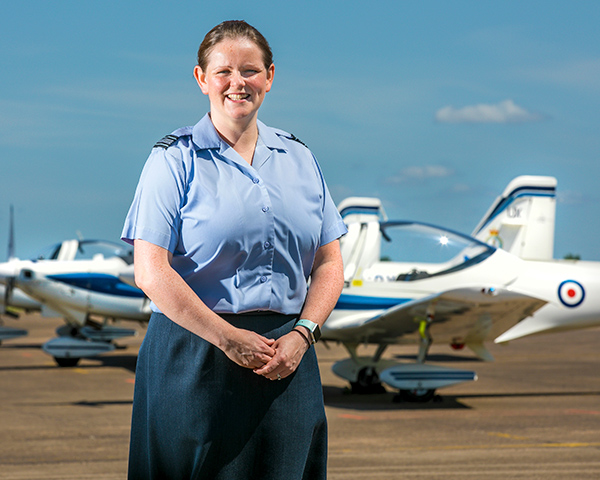
Read More
As a Senior Engineer Officer, she acted as the Avionics and Electrical Engineering Authority on the Sentinel R1 fleet, Officer Commanding Forward Engineering Squadron at RAF Coningsby and is now serving on 6 Flying Training School , RAF Cranwell where she is responsible for assuring all contractor-led engineering activities on the fleet of 91 Grob Tutors. In this role she has worked closely with the contractor to ensure that the training of pilots, a key defence output, could continue safely within COVID restrictions, alongside engineering maintenance activity. In her spare time she has volunteered as a steward at her local COVID vaccination site.
Heroes story
Squadron Leader Georgie Hobson, Royal Air Force Senior Engineering Officer
An Interview with Sqn Ldr Georgie Hobson, Senior Engineering Officer (SEngO) 47 Squadron, RAF Brize Norton
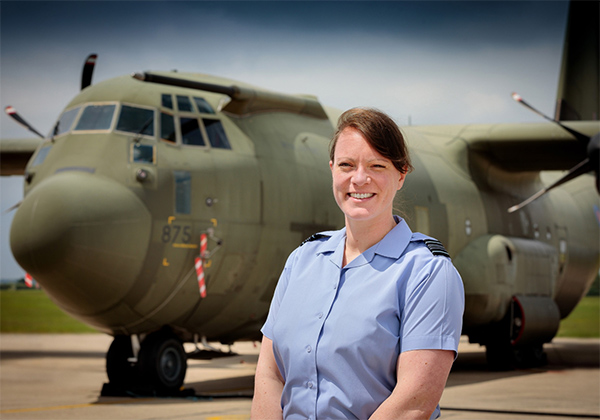
Read More
- What made you want to become an Engineer? I originally started training to become an Architect but quickly realised that it wasn’t for me. Whilst at school, I had attended a residential engineering week for girls at the University of Bristol which I had enjoyed and when contemplating my options, I decided that engineering offered a better balance of the aspects I enjoyed from architecture with more technical detail. I opted to do a Mechanical Engineering Master’s degree at the University of Bath as it would still leave my options quite open.
- Why did you want to work for the RAF? At university one of my friends decided to apply to join the University Air Squadron and she persuaded me to go along to the stand at Freshers fair. Hearing what they had to offer I thought it sounded interesting and fun. After two years on the Air Squadron and having visited lots of stations, attended numerous social events, undertaken Adventurous Training expeditions and flown in various aircraft (including a B-52 over Jersey!) I decided that it was what I enjoyed most at university and therefore I wanted to join the RAF. I applied for sponsorship, which I got for my last two years of study and joined the RAF immediately after graduating in 2009.
- What is the best part of your job? The best part of the job is definitely the people, I’ve been privileged enough to work with a large number of highly talented technicians and engineers and it is the people that I work with who make the job enjoyable. Unfortunately, COVID-19 has impacted this rather a lot with more working from home which is less personal, it has also significantly limited social events. There are some other pretty cool parts of the job and I’ve been lucky enough to experience things such as, travelling to Melbourne for the RAAF Air Show, flying in an USMC Osprey over Afghanistan, representing the RAF Rowing Team in a competition in San Diego, and being part of the team when HRH The Duke of Cambridge opened the STEM centre at RAF Coningsby.
- What are the challenges you face in your career (and how do you overcome them)? One of the biggest challenges is that my role typically changes every two to three years and involves having to learn a completely different role, different aircraft types and get to know new colleagues. For example, as the SEngO on 47 Sqn, I’ve had to learn the complexities of multiple systems from avionics to hydraulics to enable me to make airworthiness decisions on allowing an aircraft to fly. Fortunately, I have a team of 250 engineers and technicians including industry to support me with their additional in-depth knowledge and experience on the aircraft. In contrast, my previous role included certification work for bringing the P-8A into service in the RAF and I worked in a small team of only three engineers. This can be challenging but is one of the reasons why a job as an engineer in the RAF is full of variety and remains exciting.
- What would you say to young girls all over the world who are considering what subjects they want to choose? Keep your options open. I wasn’t sure what I wanted to do, tried it, and then changed my mind, so I was glad that I had kept my options open through my subject choices.
- Do you have any advice to girls wanting to become engineers? Go out and see what jobs are out there, do some work experience to see what options are available. Even if you don’t think that something is exactly what you are interested in, it might change your mind or open it up to other ideas. Also, get involved in STEM groups or look at other organisations such as the Air Cadets, which give you the opportunity experience different roles.

Heroes story
During the first months of the pandemic, a small group of Mercedes-AMG Petronas’ designers and engineers started work on a new design for a ventilation shield. Named the Zephyr, the purpose of the system was to enable surgeons, anaesthetists and nurses to care for patients and at the same time be protected from respiratory diseases carried in the air, liquids or blood. Due to the increased number of COVID patients being seen by the NHS, the team working on the Zephyr received numerous emails from doctors seeking to put the system into use in their hospitals.
Read More
With the help of a healthcare consultant and a number of doctors, the Zephyr team have now received approval from the Imperial Trust ethics committee to perform research with patients and are conducting trials.

Heroes story
The COVID-19 pandemic has challenged UK society in many ways. The Academy is recognising the contributions that the engineering community has made in helping society address those challenges by making a number of President’s Special Awards for Pandemic Service. These are just two of the award winners.
Only six months into her career at National Physical Laboratory (NPL), engineer Jean Morris instigated and played an important role in developing a programme to build and test prototype ventilators.
Read More
A large part of the work was undertaken by three graduates of the NPL apprentice programme, Joshua Bayfield, Joshua Schofield and Arthur Vie. Jean Morris and her team designed a fan-based ventilator with a portable and lightweight design that costs approximately a tenth of the cost of a commercial unit, and all parts are either made with common machine tools or easily sourced.
University College London-Ventura CPAP breathing aids were developed by a team led by Professor Rebecca Shipley and Professor Tim Baker working with Mercedes-AMG High Performance Powertrains. The team manufactured 10,000 breathing aids for use in UK hospitals and shared the designs with organisations from 105 other countries at no cost. Clinical data from UCLH shows that half of patients treated with CPAP do not progress to invasive ventilation.

Heroes story
At V12, we are proud to have been a key contributor to keeping women in the industry safe, helping to ensure they get home safe every day, by giving them the right footwear. In the last year, we have been the proud supplier of footwear to thousands of women and although we do not know every person wearing V12’s, we can be sure that those in our footwear have stepped up to ensure that the industry continues to run smoothly. Our mission of keeping them safe and comfortable means their full time and attention is focused on getting the job done.
Read More
Key workers, maintaining and building infrastructure, still go out to work each day, whilst many of us are able to accomplish our jobs remotely, from the safety of our homes. And although our contribution only extends to keeping people booted, we are very proud of the people who wear our shoes. We have been able to supply footwear to a number of workers within the Nightingale projects, working at speed to fulfil and deliver over 200 pairs of boots in under 3 hours, a position we were grateful for – supporting critical workers to stay safe whilst saving lives.

Heroes story
Caragh McWhirr, Innovation Manager at Xodus
Caragh has 20 years of experience in the energy sector and 16 of those years have been spent at Xodus. Caragh achieved a 1st Class BEng Degree in Electrical and Mechanical Engineering but has since developed a broad technical base covering electrical, mechanical, process and safety engineering. She has specialised in process engineering and in appraise and select conceptual engineering studies. Now as the Innovation Manager at Xodus, Caragh is responsible for developing innovation techniques and culture across Xodus worldwide and is also a part time secondee into the OGTC’s Energy Systems Integration solution centre. Caragh’s technical expertise and the senior role she holds at Xodus has led her to become an incredibly respected woman in the company. Caragh will turn her hand to anything she is tasked with and always succeeds in achieving a positive result. Caragh is always on hand to support her colleagues, particularly junior engineers in the company. Somehow alongside this busy role at Xodus, Caragh finds the energy to keep fit and particularly enjoys running. She is also a STEM Ambassador, encouraging the future generation to pursue a career in science, technology, engineering or mathematics. Rightfully so, Caragh’s achievements and personality has led her to become a role model for all engineers across Xodus.
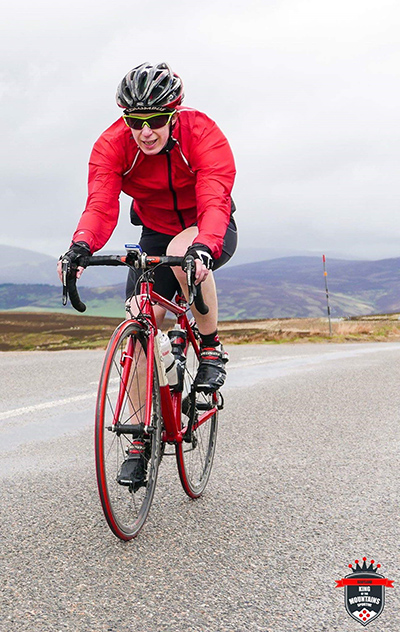
Heroes story
Flying Officer Ellen Hood
Flying Officer Ellen Hood graduated from the RAF Officer Training Academy at RAF College Cranwell last Thursday, before her graduation she shared her journey into Engineering with us – who do you think Ellen’s engineering hero is? Read Ellen’s story to find out!
“I am 27, I have a Master’s degree in Mechanical Engineering and enjoy playing hockey in my spare time. I wanted to become an engineer as I’ve always loved mathematics, problem solving and building Lego.
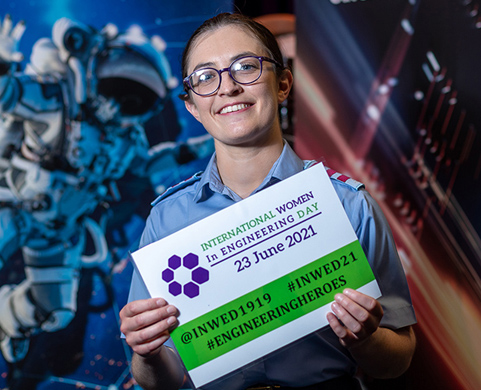
Read More
Studying engineering has provided me with a wide range of opportunities across different areas; including manufacturing, logistics and finance. I joined the RAF for an exciting and challenging career in engineering as well as the opportunities to play sport and travel.
I am in the Communications Electronics (CE) Engineering branch and very much looking forward to starting Phase 2 training at RAF Cosford. As an Engineering Officer, I aspire to work in the Cyber and Space Defence sectors and to lead CE engineers to succeed in challenging environments.
My engineering hero is Hedy LaMarr, a Hollywood actress and pioneering inventor who co-developed a radio guidance system using frequency-hopping spread spectrum technology for Allied torpedoes during World War II. Her original patent became a springboard for the development of secure WiFi, GPS and Bluetooth, which she only received recognition for posthumously”.
